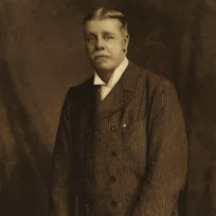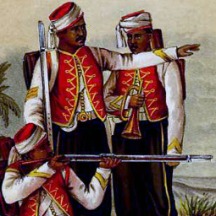I have crossed the Denton Bridge nearly 100 times. The bridge is the only roadway that crosses the swamps or wetlands from “The Kombos” to Saint Mary’s island. The island is where Banjul, The Gambia’s capital city, sits and the mighty Gambia River pours into the Atlantic Ocean. The bridge is named after Sir George Chardin Denton, the former Governor and Commander of Chief of the Colony of The Gambia.
However, it was the treasurer of The Gambia during Denton’s administration, Francis Bisset Archer, who provides a roadway to the past in, ”The Gambia Colony and Protectorate An Official Handbook.” The book he wrote in 1906, along with that of explorer Mungo Park’s “Travels in the Interior of Africa,” helped me create a more balanced narrative on the Atlantic Slave Trade and provided historical context for contemporary issues facing Africans, at home and abroad.
2) The commissioners should not allow Arabs, Moors, and wondering professional beggars to settle in any town in their district.
One of the telling passages in Asher’s 1906 account was the “Instructions for the Guidance of the Traveling Commissioners.” The instructions were a list of laws governing the colony and some were similar to laws governing the enslaved in the United States:
1) Any headmen (chief) who neglect to report any case of slave dealing in his town shall be punished, and the fact at once reported. (The British outlawed the slave trade, not slavery, in 1807)
2) The commissioners should not allow Arabs, Moors, and wondering professional beggars to settle in any town in their district.
He also writes, “Jolloffs, Mandingoes, Julahs, and The Foulahs proper are easily distinguished from the pure negro in Africa, inasmuch as their features are more of the European type and their skin fairer than those of the average native of the country.”
3) The commissioner should be present as often as possible at any native court held in his district . . . and do all he possibly can to assist in their proper conduct.
4) Towns are not to built under any circumstances within 100 yards of the Anglo-French (the Senegal-Gambia) boundary line.
For years, Ebrima Cham insisted that I travel to his home village, Kani Kunda. I finally did in 2019 for Tobaski, an Islamic holiday. While “up country,” or miles from the mouth of The Gambia River, the ever persistent Cham insisted that we continue up the river to McCarthy Island.
I am very glad we did, but it was not until 2024, that I understood what I learned then would be the foundation for understanding much more. The guide there spoke much about the British presence on the island, which is about 200 miles into Gambia’s interior.
A Slightly Different Look at Colonialism and Slavery (Part I of II)
Praising the Past



The British, however, were not the first Europeans to invade The Gambia. A 1454 Bull (a type of public charter issued by a pope of the Catholic Church) by Pope Nicholas V granted Portugal the right to prohibit other European nations from trading with The Gambia, followed by the Dutch. In 1460, the Portuguese built a factory (trading house) in what is now The Gambia.
A clause in the 1783 Treaty of Versailles, which was a set of treaties that ended the American Revolutionary War, also guaranteed Britain Fort James in The Gambia River, the river, and carved out the village of Albreda for the French. The inclusion of The Gambia in the treaty underscores its value as a world economic asset at that time.
Though many African Americans now neglect to honor The Gambia’s important past, over the years, the European tribes (nations) would fight over control of the Gambia River and the trading that came with its control. After the Dutch usurped the Portuguese, Britain struggled with Holland and France for control of the River that allowed them to trade directly with Africans in the interior.
The trade in humans alone was valuable. Around 1730, each captured African sold for about 10 British pounds or more than $1,500 in today’s US dollars.
A clause in the 1783 Treaty of Versailles, which was a set of treaties that ended the American Revolutionary War, also guaranteed Britain Fort James in The Gambia River, the river, and carved out the village of Albreda for the French. The inclusion of The Gambia in the treaty underscores its value as a world economic asset at that time. Today, when approaching Juffureh, home of Kunte Kinte, from the river, one passes through Albreda.
I have also adopted the language of historian Dele Ogun, who says British Prime Minister William’s Pitts conversation on the politics of the slave trade after the Haitian Revolution in 1804 was more about self-preservation than altruistic. Pitts, affirms Ogun, feared Africans outnumbering Europeans in the Americas. “Pitt’s conversion to the course of abolition of the slave trade was aided by a shrewd calculation which gave him assurance that Britain could survive without the slave trade because it already had an ample stock of Africans in captivity in the Caribbean Islands.”
A clause in the 1783 Treaty of Versailles, which was a set of treaties that ended the American Revolutionary War, also guaranteed Britain Fort James in The Gambia River, the river, and carved out the village of Albreda for the French. The inclusion of The Gambia in the treaty underscores its value as a world economic asset at that time.
Though many African Americans now neglect to honor The Gambia’s important past, over the years, the European tribes (nations) would fight over control of the Gambia River and the trading that came with its control. After the Dutch usurped the Portuguese, Britain struggled with Holland and France for control of the River that allowed them to trade directly with Africans in the interior.
The trade in humans alone was valuable. Around 1730, each captured African sold for about 10 British pounds or more than $1,500 in today’s US dollars.
A clause in the 1783 Treaty of Versailles, which was a set of treaties that ended the American Revolutionary War, also guaranteed Britain Fort James in The Gambia River, the river, and carved out the village of Albreda for the French. The inclusion of The Gambia in the treaty underscores its value as a world economic asset at that time. Today, when approaching Juffureh, home of Kunte Kinte, from the river, one passes through Albreda.
I have also adopted the language of historian Dele Ogun, who says British Prime Minister William’s Pitts conversation on the politics of the slave trade after the Haitian Revolution in 1804 was more about self-preservation than altruistic. Pitts, affirms Ogun, feared Africans outnumbering Europeans in the Americas. “Pitt’s conversion to the course of abolition of the slave trade was aided by a shrewd calculation which gave him assurance that Britain could survive without the slave trade because it already had an ample stock of Africans in captivity in the Caribbean Islands.”
Join POH For Tobaski2025
The specifics evolve depending upon flight schedules from the US and those from Dakar. The option of going by land between the capital cities, Dakar and Banjul, depend upon the flight schedules and the number of travelers. Here is the preliminary itinerarySupport for Port of Harlem magazine
Like many publications, including the famed AP, our advertising revenue is not keeping pace with expenses. If you have not donated to our non-profit or have not become a POH Podcast supporter, we ask you for a donation. If you want to see more stories such as this one, please donate now. No amount is too little.
Advertisers | Contact Us | Events | Links | Media Kit | Our Company | Payments Pier
Press Room | Print Cover Stories Archives | Electronic Issues and Talk Radio Archives | Writer's Guidelines






